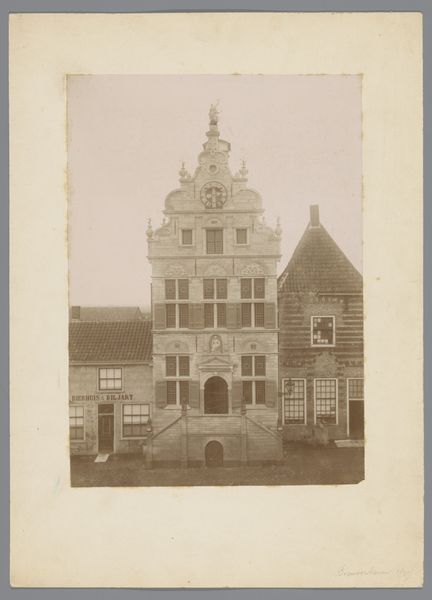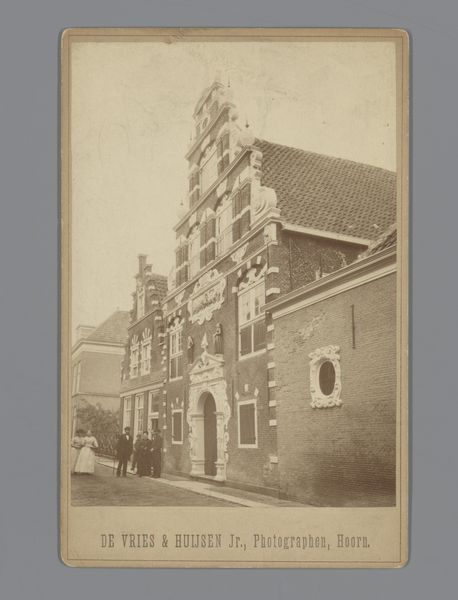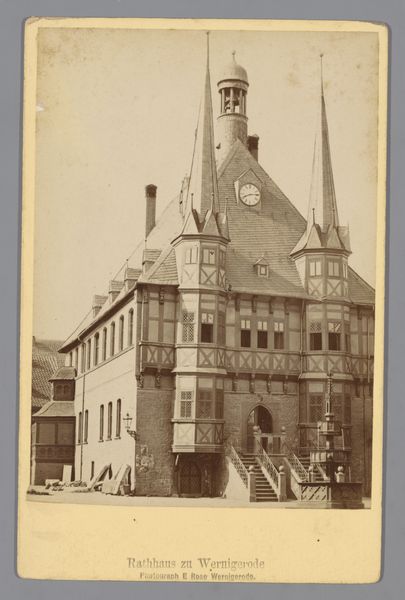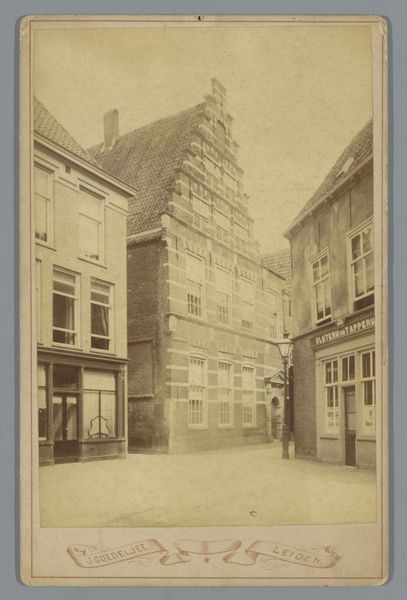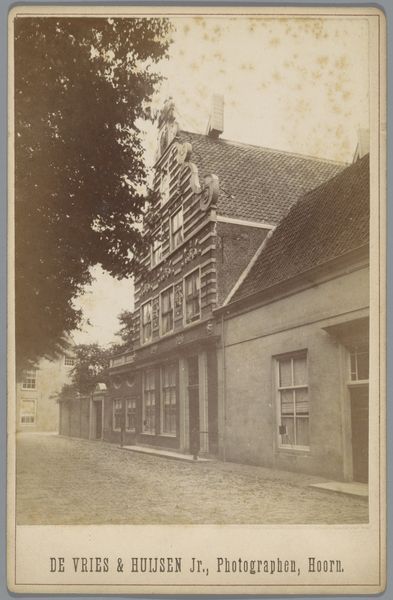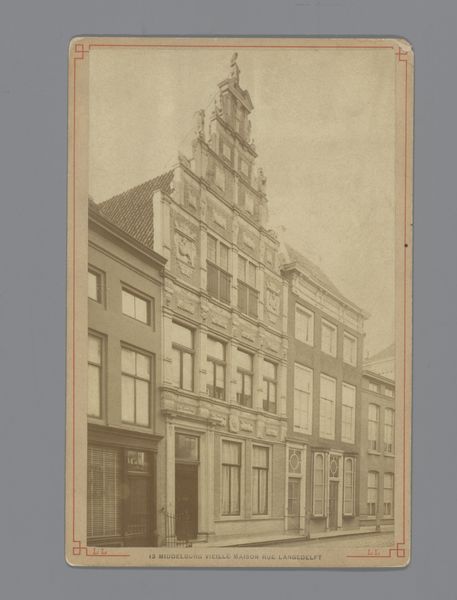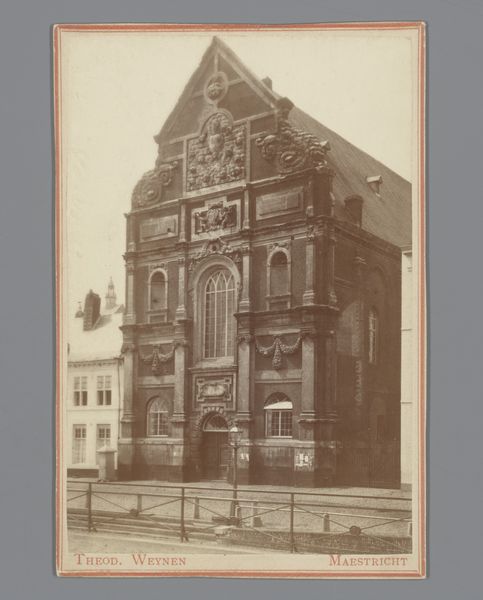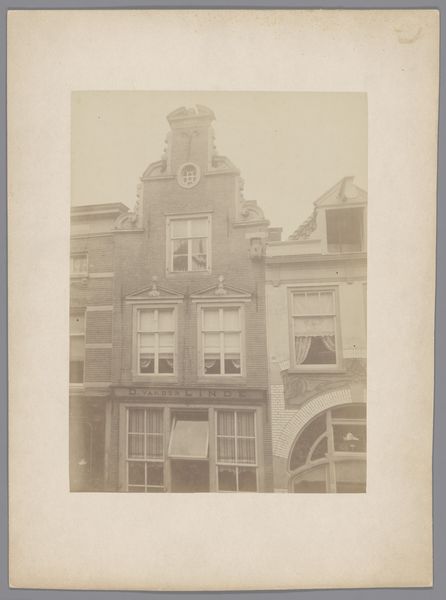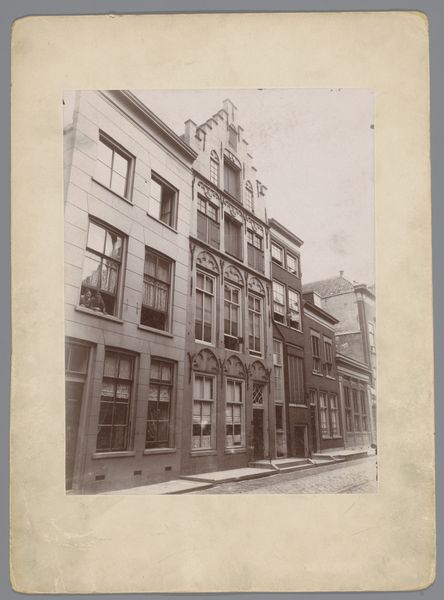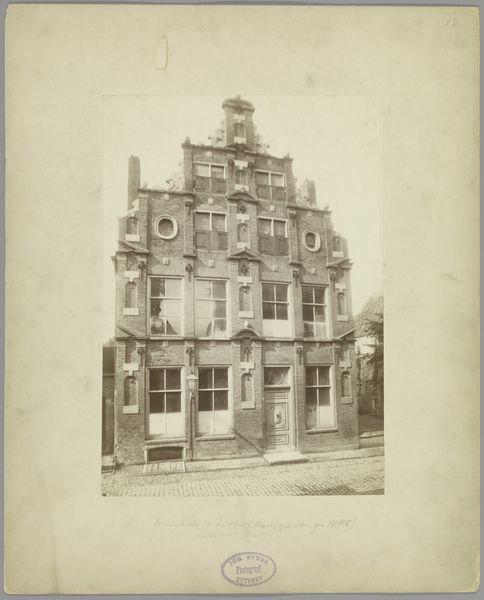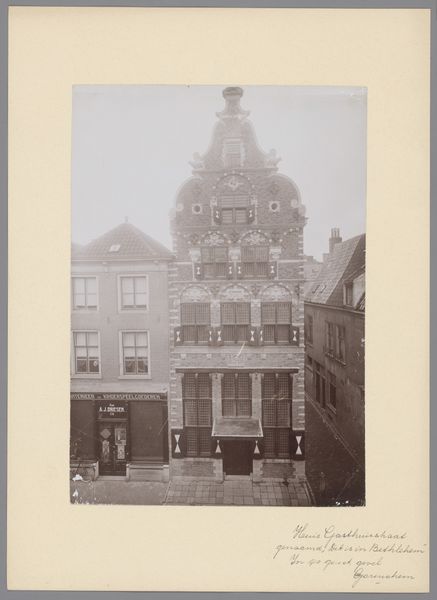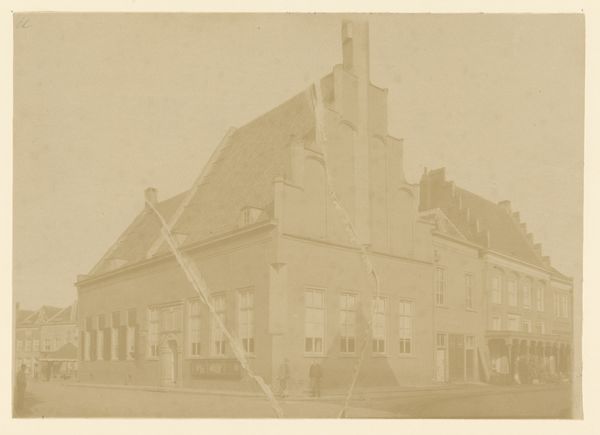
print, photography
# print
#
photography
#
cityscape
#
realism
#
building
Dimensions: height 144 mm, width 101 mm, height 167 mm, width 108 mm
Copyright: Rijks Museum: Open Domain
Curator: Well, here we have "Facade van een huis te Enkhuizen", a photographic print capturing a building, dated somewhere between 1870 and 1900. Editor: The immediate impression is one of striking, albeit somewhat subdued, geometry. The facade is so deliberately constructed with its horizontal stripes, yet the monochrome photography washes out some of the impact. I wonder about the kind of labor and materials it took to construct. Curator: It is important to look at the studio of De Vries & Huijsen Jr. located in Hoorn, because these photographs served a public function in representing the burgeoning Dutch national identity and documenting urban development. Editor: Right. This facade. It screams bourgeoisie respectability. But thinking about materiality – the bricks, the timber, the glass… where were those sourced? Were local artisans involved, or were the processes industrialized at this point? The photograph itself is part of a chain of industrial practices. Curator: We have to consider how urban planning in the late 19th century played a crucial role in establishing particular architectural styles. This print isn't just documenting a building, it's reinforcing certain visual ideas about Dutch cultural values to the general public through consumerism. Editor: Yes! I wonder if we can uncover something about how building practices reinforced certain economic or social classes. Were such grand façades commonplace, or were they statements of particular privilege or aspiration in Enkhuizen? Curator: And further, photographic prints like this were frequently acquired, exhibited and collected and functioned in constructing not only the sitter's but also the photographers studio's identity within local, national and at times international circles of visual culture. Editor: The surface details are what captivate, don't they? What materials were valued enough to be displayed so openly, and by which labor? Curator: It's a seemingly simple photograph of a building that really shows us much about societal values and class constructions through public consumption. Editor: Definitely, now I'm considering the labor embedded not only in the building’s construction but the photograph as an item available to the public.
Comments
No comments
Be the first to comment and join the conversation on the ultimate creative platform.
